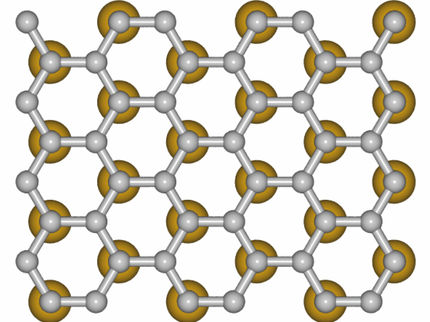The quantum waltz of electrons hints at the next generation of chips
A group of spintronics researchers at EPFL is using new materials to reveal more of the many capabilities of electrons. The field of spintronics seeks to tap the quantum properties of "spin," the term often used to describe one of the fundamental properties of elementary particles - in this case, electrons. This is among the most cutting-edge areas of research in electronics today.
Researchers working in the Laboratory of Nanoscale Electronics and Structures (LANES), which is run by Professor Andras Kis, were able to quantify these quantum properties for a category of two-dimensional semiconductors called transition metal dichalcogenides, or TMDCs. Their research projects confirm that materials like graphene (C), molybdenite (MoS2) and tungsten diselenide (WSe2) offer, either alone or by combining some of their characteristics, new perspectives for the field of electronics - perspectives that could ultimately lead to smaller chips that generate less heat.
"With the methods we've recently developed, we've shown that it is possible to access the spin in these TMDC materials, quantify it and use it to introduce new functionalities," says Kis.
This all takes place at an extremely small scale. In order to access these quantum properties, the researchers must work with high quality materials. "If we want to examine certain characteristics of electrons, including their energy, we need to be able to watch them move over relatively long distances without there being too much dispersion or disruption," explains Kis.
In the form of waves
The researchers' method allows them to obtain samples of sufficient quality both to observe how electrons move around in the form of waves and to quantify their energy.
But the LANES team was also able to access another quantum property. Spins of electrons and holes in this type of a 2D semiconductor can be in one of two states, which are conventionally described as being oriented upward - spin up - or downward - spin down. Their energy will be slightly different in each of these two states. That's called spin splitting, and the EPFL researchers have measured it for the first time for electrons in TMDC materials. In the second publication, the researchers wrote about how they used the spin splitting in a TMDC in order to introduce polarized spin currents in graphene without using a magnetic field.
These discoveries are a step forward for the emerging field of spintronics and make it increasingly likely that a different property of charge carriers - i.e. spin, in addition to the electrical charge - will play a role in tomorrow's electronic devices.
Original publication
Other news from the department science

Get the chemical industry in your inbox
By submitting this form you agree that LUMITOS AG will send you the newsletter(s) selected above by email. Your data will not be passed on to third parties. Your data will be stored and processed in accordance with our data protection regulations. LUMITOS may contact you by email for the purpose of advertising or market and opinion surveys. You can revoke your consent at any time without giving reasons to LUMITOS AG, Ernst-Augustin-Str. 2, 12489 Berlin, Germany or by e-mail at revoke@lumitos.com with effect for the future. In addition, each email contains a link to unsubscribe from the corresponding newsletter.


























































